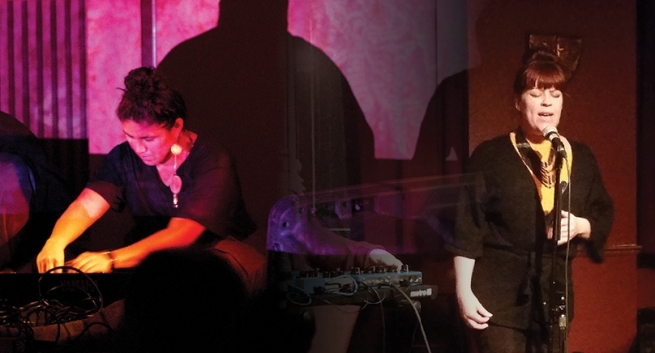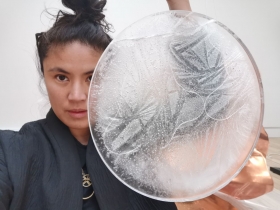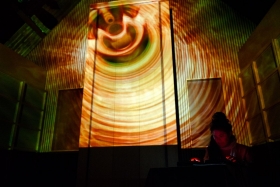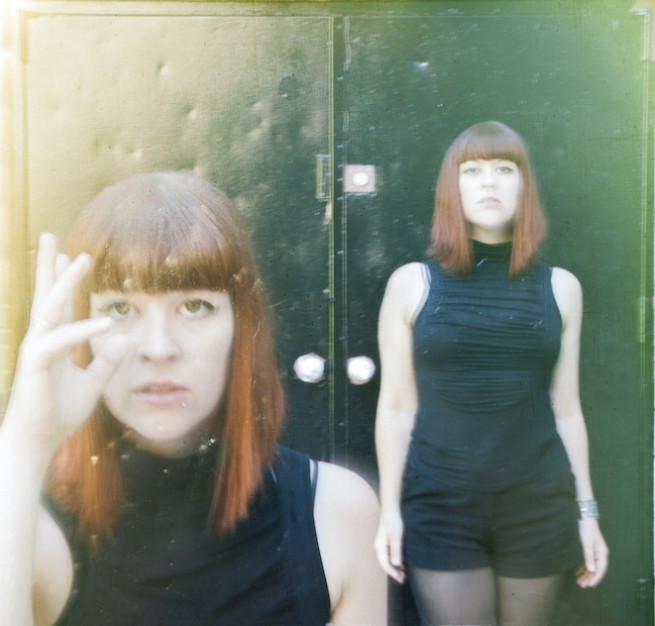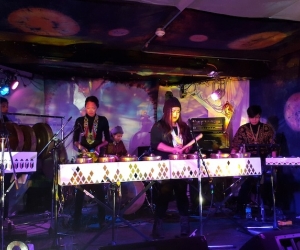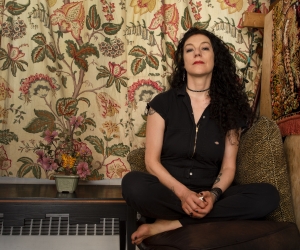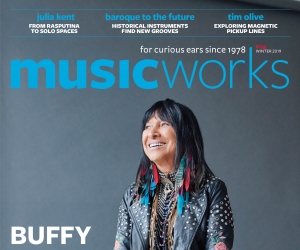It is impossible to stand still nowadays in the face of worldwide security concerns. With climate change, wars, oppressive political climates, and alarming epidemics, the ability to move around physically has become a humanitarian necessity for many. The commodification and hyperrealism of the Internet produce spaces that everyone now negotiates with trepidation. The rise of the Misinformation Age? Ideological extremism in echo chambers? Overstimulation by current-events information? Even within the comforts of our virtual domiciles, modern society does not care anymore about stopping to smell the roses.
To make sense of the world, humans construct notions that inform how we navigate our way through to survival. However, shared values start diverging as larger groups strive for order based on localized conditions. Legitimizing these ideals requires institutions to enact political gatekeeping. In legal cases like Canada (Citizenship and Immigration) v. Khosa (2009, SCC 12) or Suresh v. Canada (Minister of Citizenship and Immigration) (2002, 1 S.C.R. 3), Canadian courts were compelled to negotiate the humanity of the deemed-terrorist “outsider” against the security of the “citizen.” The coronavirus pandemic of 2020 raises questions from everywhere about the supposed inviolability of international borders.
As culture occupies space, people’s inclination towards ownership also causes them to delimit practices that shape worldviews. Such is the case in musical communities, where institutions find the raison-d’être of safeguarding traditions for the sake of culture. At best, it encourages awareness of power relations and cultivates respectful approaches to differences. At its extreme, treating traditions as “owned territories” fuels the perceived need of protecting them from obscurity or vandalism.
Malikot: frisky; restless; impish, even.
I find that Tagalog word amusing. Kat Estacio blurted it out while chatting with me after a show at Toronto’s Music Gallery in January 2020 marking and celebrating the release of electronic artist Ziibiwan’s debut album, Giizis. Ziibiwan wasn’t able to perform due to unforeseen circumstances, but the evening of music went ahead: a set from Anishinaabe multi-instrumentalist Melody McKiver and an ambient set from Toronto-based Phèdre, April Aliermo and Daniel Lee’s electronic duo. We listened to McKiver’s atmospheric loops, textures, and journeys with the viola. Phèdre’s tapestry of electronic sounds was accompanied by images of corals, jellyfish, and ocean-inspired nuances that flashed through Estacio’s video projections. As if drawn towards the ocean, we simply drifted along with the ebb and flow of musical time.
Phèdre’s music emanates intense energies with dance-music inclinations and a controlled flux of shifting soundscapes; their style is very much their own. But going back to that word malikot—Estacio and I simply nodded our heads in agreement: the duo’s sound never sat still.
Aliermo has donned many hats during her broad artistic career: bass guitarist for indie-pop band Hooded Fang; producer and correspondent at CBC Arts (a division of the Canadian Broadcasting Corporation); community arts organizer; and, most recently, sound artist. The multifaceted nature of her projects covers a lot of ground, and yet she glides through numerous demands and engagements.
Visiting her apartment a few days after Phèdre’s performance at the Music Gallery, I notice a Roland Juno-D synthesizer sitting in her cozy office. “I plan to dispose of it,” she says, much to my dismay. “I created loop tracks with it before, but its sounds are not that great anymore.”
I mention to Aliermo my conversation with Estacio and our verdict about Phèdre’s performance and ask how she would translate malikot into English—after all, she’s a second-generation Filipino-Canadian who understands the language well.
It turns out that we cannot agree on a translation, and just laugh it off.
Darmstädter Ferienkurs—a summer festival of concerts and lectures held every two years—has been a hub of European avant-gardism within Western contemporary classical music since its founding in 1946, shortly after World War II. Familiarly known in English as the Darmstadt Summer Course, the event has gained affiliations with many established composers, musicians, and scholars, while moving from the dogmatic reverence of serialism towards a welcoming attitude of pluralism. Its accessibility is another matter. Economically disadvantaged artists would think twice before responding to its first-come-first-served invitation, registration fees, and long waitlists. Its global positioning limits its worldwide reach: travel visas limit people from the “Global South” to participate in the community. Addressing existing barriers on gender inequality, the institution has already redesigned their booking procedures to ensure parity among applicants.
April Aliermo encountered both culture shock and opportunities for learning while attending Darmstadt in 2018. Working with German sound-art pioneer Christina Kubisch on the world premiere of Orchestra on a Wire that year, her ventures went way beyond the project’s sixty-four channels of electromagnetic induction. Initially cold-calling Kubisch for mentorship, she found herself caught up not only in transient currents, but also the intellectual approaches that she never imagined throughout her years of being a musician. In an email, she described Darmstadt as a “weird and wonderful place,” so when me meet, I ask her to elaborate.
“Coming from my DIY, rock-and-roll world, I was like, ‘What is this? Where am I?’ I just couldn’t believe it,” she recalls. “The music scene I come from [relies on] feeling, emotion, and expression to make music. At the end of the festival, I found everything robotic and mechanical. Nothing was tongue-in-cheek, and I was taken aback with the things people took seriously.”
Some musical experiences she had there made very strong impressions on her. She recalled seeing German chamber choir ChorWerk Ruhr’s performance of Karlheinz Stockhausen’s Stimmung in the middle of a forest at sunrise. She also enjoyed basking in the lush drones of Éliane Radigue’s L’île Re-sonante. While she got flustered with how everything seemed cerebral, a colleague finally explained that one original goal of the Darmstadt courses was to break the chains of imperialist censorship imposed on music-making in Nazi Germany. Celebrating the liberation of culture, musical innovation was finally deemed acceptable.
“I do not know how people can celebrate music that is composed in an intellectual fashion,” Aliermo continues. “But I learned a lot. And now I’m taking all those things and putting them into my practice. I now ask myself, How can I make this kind of music with more feeling and emotion?”
Thus, Artemis of Colour (2019) was born. “Artemis of Colour is an expression of female independence, strength, and fierceness—but in the style of what I picked up in Darmstadt,” April says, carefully choosing her words. In her first large-scale sound-art project, sounds of females pleasuring themselves surge over top of meditative electromagnetic drones. The agency of every “womxn” to own her sexuality translates into an ultimate form of empowerment in this work. At its premiere, the piece was accompanied by audio-responsive visuals created by Sahar Homami (with Kat Estacio triggering the images) in a January 2019 concert in Toronto that was part of the Music Gallery’s annual Emergents series.
“This expression happens not because the notes sit in the right place, or the music looks scientifically cool,” she blurts out with a laugh. In hindsight, seeing it now as a nuanced form of resistance also makes an intriguing point to contemplate.
Identifying systemic barriers in order to promote diversity has become a priority in contemporary-music programming. In 2019, Jack Quartet’s inaugural JACK Studio Artists program brought together musicians of diverse backgrounds for mentoring by the New York-based group. That same year, composers Sally Blackwood, Liza Lim, Peggy Polias, and Bree van Reyk issued a call to action citing seven articles of interest demanding that Australia commit to the inclusion of female, nonbinary, and ethnically diverse composers in opera. Grassroots initiatives in Canada—such as the Montreal Contemporary Music Lab, Toronto Creative Music Lab (TCML), and the Waterloo Region Contemporary Music Session—sprang up during the 2010s to address musicians’ dissatisfaction with the level of accessibility to existing institutions. Even with arguments that diversity is in itself a monolith of political leveraging, the increasing demand for inclusion propagates a much-desired call: “Open the borders! Make the historically invisible visible!”
I first met Dutch-born composer and vocalist Lieke van der Voort at the 2017 TCML. We participants shared a strong sense of community back then, and I vividly remember pausing outside Array Space while mulling over a conversation she and I had had after a creative place-making workshop facilitated by Jumblies Theatre. We exchanged thoughts about how we were feeling unheard and invisible in the community. Although this conversation never left my mind, I did not foresee discussing this topic again.
Since 2017, van der Voort has gained traction in Toronto’s contemporary music scene, with commissions from Continuum Contemporary Music, Thin Edge New Music Collective, flutist Sara Constant, guitarist An-Laurence Higgins, and cellist Émilie Girard-Charest. Like Aliermo, van der Voort never stands still. You can hear her singing in various ensembles, such as the Element Choir, The Band Named Crow (on their EP Two Moons / Ayumi), the Near Distant Ensemble (with the EP They Are Hostile Nations), and with her own group, Kontraband Kollektif. Her music moves through an expanse of approaches and instruments—jazz improvisation, electronics, voice—much as water flows through the varied Dutch landscape.
“I never had [my] music performed in the Netherlands,” she tells me to my surprise in early 2020, “while Toronto has embraced my work.” Music, I learn, was a hobby for van der Voort when she moved to Toronto ten years ago; formal musical studies did not materialize until she decided to audition for the Jazz Voice program at Humber College: “There were no musicians in my family. My idea of a musician was about being special—[music is] something for cool people and not for normal people like me.” Looking back, one could argue that her childhood hobby of making up radio programs on cassette marked her as a creator. But she questions the prevailing attitude that demands appropriate credentials. “Gatekeeping is scary for me. Who decides who is allowed to be heard? This is what a jury does when they sit there during adjudication.”
The remark shines as bright as day for me. Indeed, who gets to be a composer? Does having a music degree determine one’s validity?
“None of my commissions would have been possible if TCML did not pave the way for me. I was honest in every application I submitted: ‘I do not have a master’s or a Doctorate degree, my notation skills may be lacking . . . ’ I was lucky that TCML became my gateway.”
The opportunity to work with classically trained musicians proved pivotal for her at a time when invisibility and the precarity of living in Toronto both reared their ugly heads. Being included in an empowering and safe space informed her decision to remain in Canada. “I almost moved back [to the Netherlands] in 2017. I was ready to leave after that summer. I was struggling to find a place to live, and it felt like I was battling a system I could never win in, because I lack a good job.”
While the collaborative premiere of her work Systems during the TCML workshop addressed a conundrum where musicians battle an inescapable system, her work center, unrestrained (2019)—composed while she was a participant in the Canadian League of Composers’ PIVOT mentorship program—responded to the dynamics of gatekeeping. The piece sits somewhere between new music and jazz, with choice and predetermination treading along dialogues of texts (written by van der Voort) and through juxtapositions of composed passages and improvisations. At the premiere performance, the Continuum Contemporary Music ensemble ended the piece with a shouting match of “me, me, me!” as if to expose carnal desires of selfishness that once ignited world wars among centres of power.
With ballooning housing markets and the rising cost of living in Toronto, these battles are far from over.
The dance music of Detroit, Baltimore, and Chicago informed the high-BPM energy of Phèdre’s music, and yet the past years brought weariness to the duo, as well as to their peers, in terms of mental health. Referring to Phèdre’s ambient set at the Music Gallery in January 2020, Aliermo tells me, “We wanted to create something reflective and fitting. But to be able to express that and take the heaviness and emotions swirling around, it was like [conjuring] a cycle of absorption and release.”
As I inhale and exhale breaths to enact this cycle of life, she continues: “After playing party music all these years with emotions spilling over, it’s nice to finish that cycle—I think we’re just getting older and trying to find ways to relax, to get people to marinate in serenity.”
As the once malikot musician chose to remedy things by slowing down her pace, a new sound-art project emerged from this contemplation. Her installation piece Dahan, Dahan (Slowly, Carefully) is literally about slowing down, she explains: “Water droplets from melting ice blocks fall down on metal sculptures, creating sounds that are then amplified. It’s just relaxing to sit there, listen to the water dripping, watch how light shines on the ice, and see it melt.” The whole procedure of mounting the piece, which is a collaboration with metal sculptor Kristina Guison and media artist Kat Estacio, compels one to mellow out in the passage of time while physics and nature take over. She was even cautious not to spill water while carrying containers to the freezer, conjuring a calculated ritual in itself, as the task demands slow and sober movement. This work is currently under development, but April also imagined creating miniature versions that I would liken to the Japanese sōzu.
For van der Voort, the burdens of leaving and moving elsewhere enforce a feeling of voicelessness. “Even when living here for ten years, I still feel like an in-between,” she says. “What is my Dutch citizenship serving me now? It is purely sentimental [to hold on to it]; but then again, I cannot vote here because I am a Permanent Resident only and do not have Canadian citizenship.”
Canada’s tiered system of political status (refugees, landed immigrants, et al.) means that many artists have limited opportunities for development and remain hidden in full view. Those who are neither Canadian citizens nor Permanent Residents often are told things such as, “We currently don’t have programs for you, but let us know if you finally do qualify.”
In an interview with Amsterdam writer Claudia Crobatia, van der Voort talks about the reality of being left behind. “[It] leaves you with no comfort. Your loved one remains in this winter state of being and you want to stand still as well, but you can’t.” The genesis of Kontraband Kollektif’s EP Atropos (2018) revolved around her coping with her father’s suicide, which was brought on by Parkinson’s disease and his eventual withdrawal from all social contacts. Finally finding the right channel to express her repressed anger at that sad event, she made this five-track EP, which memorializes not only the feeling of loss but also the countless, unsettling negotiations towards confronting this loss.
Van der Voort asserts that writing music cannot be void of emotion and personal narrative. For her, the human voice serves as a conduit of such expression; her emotional connections and written texts for Kontraband Kollektif now inform her stylistic approaches in contemporary music. As for musical influences, she merely shrugs: “I listen to all kinds of music; but I just pay attention to the world in general. I mostly dig in from personal experiences and translate the feeling into sound.” It seems that April is not alone in provoking frictions from rigid, shiny surfaces.
Weaving these snippets of stories together, one might assume that a singular narrative of conversion emerges from the artistic experiences of April Aliermo and Lieke van der Voort: from invisibility to visibility, from precarity to privilege, from DIY rock and jazz to sound art, from eternal damnation to salvation. But I would suggest otherwise. Instead, their works reveal an ongoing narrative of negotiation, of slipping through the cracks, of situating oneself as an in-between. Aliermo still continually negotiates her place within her Filipino identity, even as she tests the waters on a newly found sound-art practice. Van der Voort fights her way through gatekeepers to legitimize her practice as a contemporary composer, while anchoring her work in musical languages she knows intimately. In an evolving world of continual instability and fragmentation, what is there to gain by tying oneself down? I would also argue that this cross-genre approach cannot be simplified into a frozen and overdetermined conception of style. Van der Voort hates genre labels, but still subscribes to some (“avant-garde,” “art music,” “jazz”) for convenience.
Dutch cultural theorist Mieke Bal’s idea of migratory aesthetics relies on the necessity of displacing fundamental modes of production to highlight spatial relations and justify an artwork’s migratory condition. Displacement, then, is necessary for its creation and reception—she called it the “condition of sentient engagement.” Interdisciplinary practice revels in such fluidity, and we must remember that those who choose to migrate (whether physically or figuratively) and negotiate with multiple spaces also do so in the aesthetic realm.
There is no centre. Rather, Lieke van der Voort and April Aliermo continuously migrate from one node to another—which is also the way that many of us navigate the world nowadays.
Top photo montage of April Aliermo (left) and Lieke can der Voort created by Musicworks art director Heshaka Jayawardena.
Photo of April Aliermo with ice by Daniel Lee.
Photo of April Aliermo performing Artemis of Colour, courtesy of the Music Gallery, Toronto.
Lieke van der Voort photo by Bea Labikova.
The Musicworks 136 CD includes two version of April Aliermo's sound piece Happy Meal?, and three excerpts of compositions by Lieke van der Voort. Read more . . .
